

Koblenz
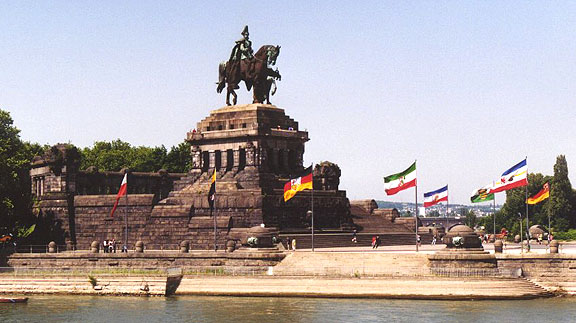
Deutsches
Eck
(William I, whose Chancellor Bismark united 32 German states in 1893)
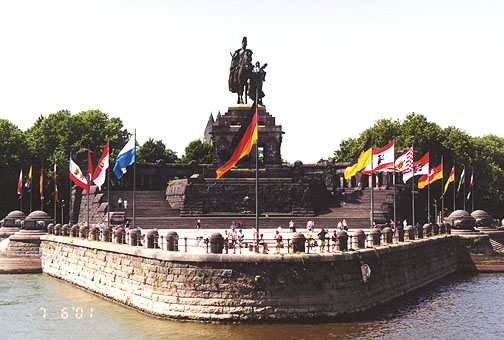
at the junction of the Mosel and Rhine rivers.
(Commemorating German Unification from Princely states)
(restored by private donation to mark recent reunification)
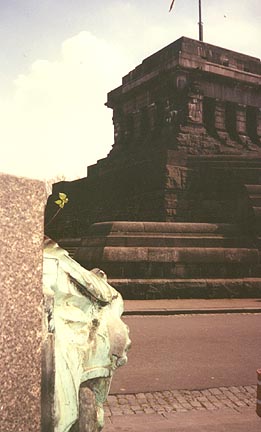
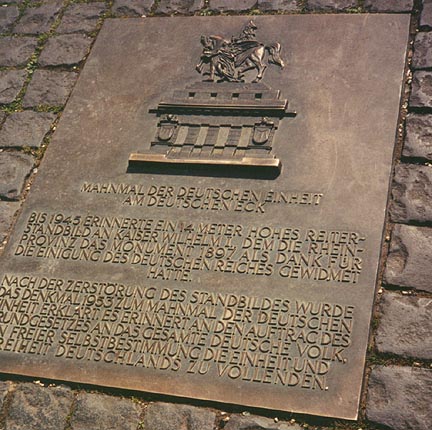
before restoration
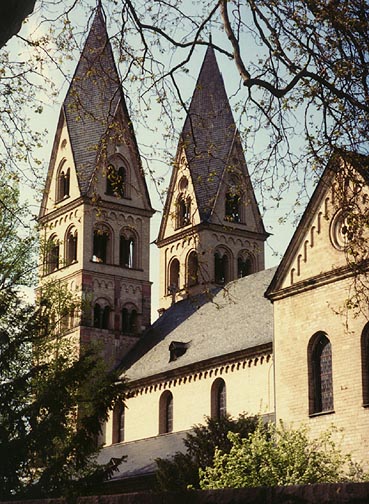
nearby church
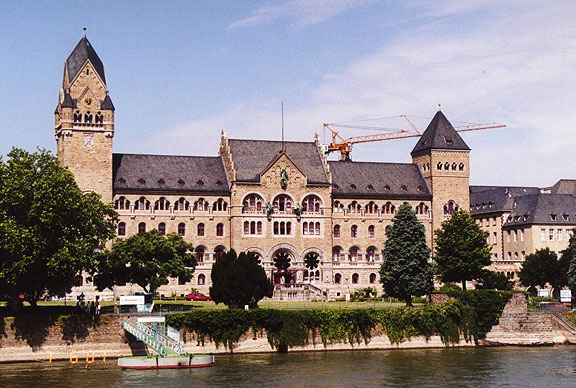
This building (built about
1905) was the residence and office of
the former Prussian Regional Government of the Rhine Province
Koblenz, also Coblenz, city in west central Germany, in the state of Rhineland-Palatinate, at the junction of the Mosel and Rhine rivers. Koblenz is an important center of tourism and commerce, particularly the wine trade. Manufactures include machinery, pianos, paper, textiles, and chemicals.
church spires
Gothic building on Münzplatz (1419 - 1430)
"Augenroller"
Clock with novel face
(eyes go back and forth,
tongue comes out for each stroke of the hour)Among the principal buildings are the Church of Saint Castor (completed in 1208); the house where the Austrian statesman Prince Klemens von Metternich was born in 1773; and a palace (completed in 1786).
in the old town
a street corner
The original citadel of the Ehrenbreitstein fortress in Koblenz was built in the 10th century. It was destroyed in 1799; the present structure was built between 1816 and 1832.
Max and Moritz
(the naughty kids who stole the chicken and the dog got blamed)Originally a Roman military outpost constructed about 9 BC, the town that developed on the site was a residence of Carolingian kings. In the 13th century the city was a prosperous member of the Hanseatic League, a commercial federation of European cities. After the French Revolution (1789-1799) Koblenz became a French possession and was later made the chief town of the department of Rhine and Moselle.
Another Fable concerning the town watchman and the women
In 1815 Prussia acquired control of the city, and in 1822 Koblenz was made the capital of the Rhine Province of Prussia. After World War I (1914-1918) Koblenz was the headquarters of the Allied Rhineland High Commission and was occupied for a time by American and French troops. Because of its importance as a rail and manufacturing center, the city was heavily damaged by bombing during World War II (1939-1945).
statue of drummer near street cafe
Parts of Koblenz were flooded following record rainstorms in December 1993; 1200 people were evacuated from their homes. Severe flooding recurred just over a year later, leaving the historic downtown area under water and causing further damage to the city. Population (1992 estimate) 109,600.
Johannes Peter Müller
(born July 14, 1801, in Koblenz; died April 28, 1858, Berlin)
a physiologist, comparative anatomist, and ichthyologist not only known for his discoveries but
also for his ability to synthesize knowledge.
The American Cancer Society dedicated one edition of "Classics in Oncology" to his work.
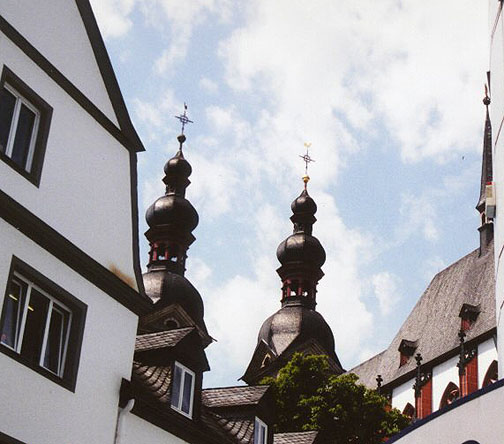
![]()
![]()